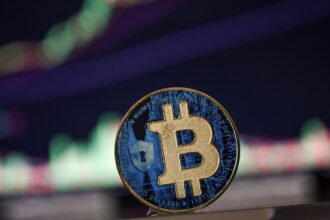It’s improved a bit over the last few months, but consumer sentiment is still extremely depressed. Of course, there’s high inflation, but given the low unemployment rate, rising wages and overall economic growth, it’s not normal for there to be so much pessimism.
A widely followed user in what’s colloquially known as Finance Twitter, by the handle Quantian, decided to drill into the data.
This person constructed a model to forecast consumer sentiment, using nine variables like the inflation rate, house prices, dollar strength, stock prices and so on to predict consumer sentiment. And it worked — a model using data from 1978 to 2019 was able to come up with a predicted number with an 87% correlation to the actual University of Michigan series.
Then that same model was used to predict sentiment after COVID struck. And, as the chart shows, the model completely broke down.
MarketWatch also ran a regression, thanks to a big assist from ChatGPT. The five factors are the unemployment rate, year-over-year consumer-price growth, year-over-year house-price growth, mortgage rates and retail gasoline prices, using data from 1990 to right before COVID struck.
Like Quantian’s, the same big gap emerged — a pretty decent model predicting sentiment before COVID (86% correlation), and then one that overestimated sentiment, substantially, following it.
What Quantian then did was re-estimate the model to figure out what changed. And there were three takeaways: that consumers cared a lot less about unemployment than previously, they want house prices to fall rather than rise, and they hate high interest rates.
Reached over social media, the Twitter user acknowledged that regressions aren’t foolproof but “just a way to tease at the data and see if there’s anything interesting there.”
In order, Quantian expressed the most confidence that:
- Consumer preferences changed during COVID;
- Americans are more sensitive to inflation and less sensitive to unemployment than they were historically;
- A large driver of the current unhappiness is rising mortgage rates and house prices.
Of course, if economic preferences changed, perhaps they could change again. If disinflation continues, perhaps American economic views will return to a more normal pattern.
But right now Americans are really fed up with inflation, and don’t like high interest rates, either.
Read on:
Inflation in Argentina is running at 150%. Are there lessons for the U.S.?
Mike Pence says inflation is 16%, but CPI is 3%. This is his logic.
Recession? White House sees ‘momentum’ that will keep U.S. out of one.
Read the full article here










